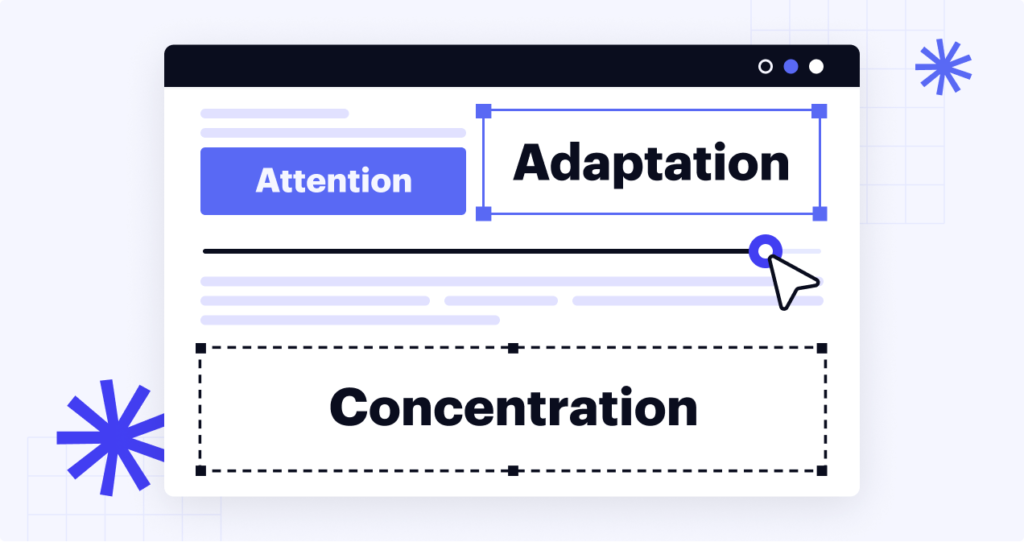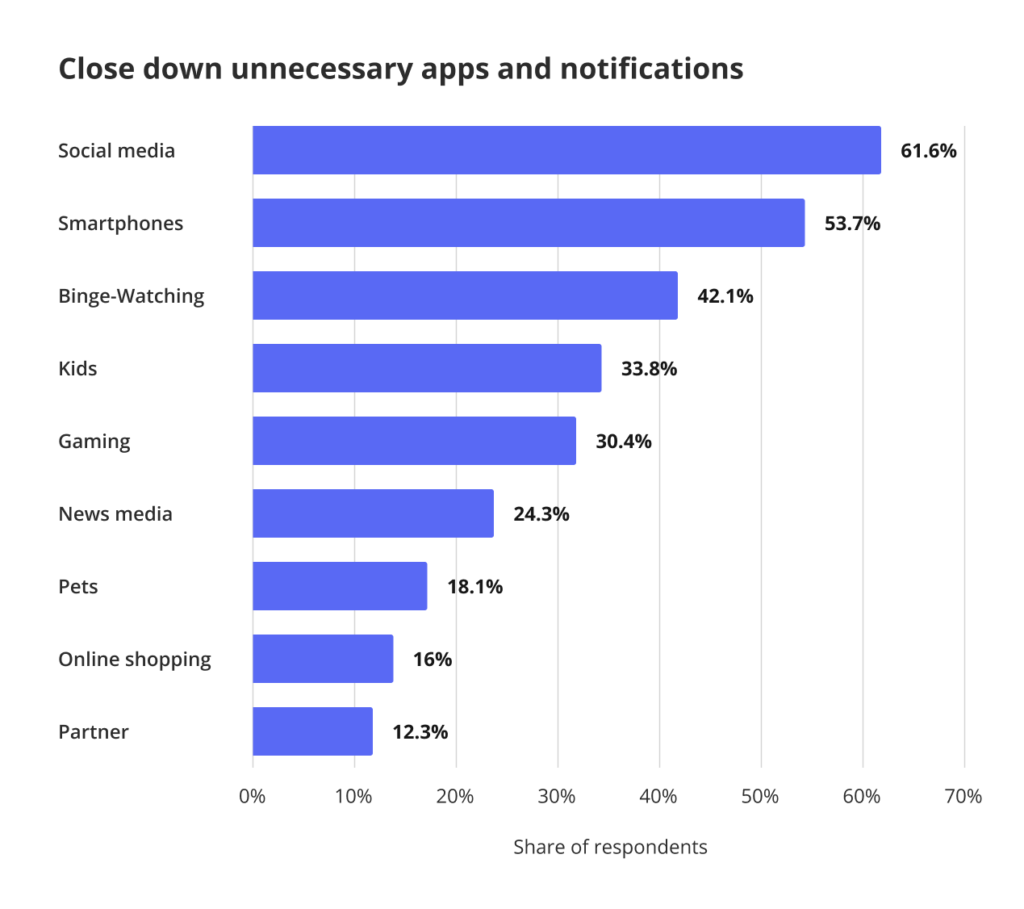
In this post-pandemic world, working environments are constantly changing. Over the past two years, employees have had to adapt to their respective company’s requirements to either work from home (WFH) or via hybrid. As countries recover from the COVID-19 pandemic, work-from-home trends are actively increasing. According to an article from HubSpot, about 62% of employees between the ages of 22 and 65 are working remotely at least part-time.
However, transitioning from everyday work-in-office to work-from-home arrangements may not be straightforward. Unlike the office, where everything is in a controlled state, working remotely may invite a slew of distractions whilst trying to get work done.
From little kids playing to long phone calls with a friend, from non-stop WhatsApp notifications to Netflix shows on TV – working from home means constant bombardment with distractions that could definitely impede one’s ability to stay focused.
So, learning how to manage one’s remote working environment is key. Here are some ways to mitigate distractions while working remotely.
7 Ways to mitigate distractions while working remotely

1. Set limits and goals
This tip is arguably the most important — that’s why it’s number one on the list. Working effectively while being remote requires proper management of one’s time and tasks. So, the first thing that needs to be done is to make a to-do list.
To-do lists are great for organizing daily tasks and responsibilities so they’re clear and concise. Instead of being overwhelmed by the anxiety of a workload, listing all of them gives the worker time to digest each task calmly and tackle them one by one. According to a study by the Journal of Experimental Psychology: Human Perception and Performance, multitasking decreases productivity as the brain takes longer to switch gears from one task to another.
Tasks that are the most time-sensitive or require a lot of brain power should be put at the top of the list. For instance, a programmer who needs to submit a fully functioning piece of code by the end of the day should put that task at number one. And things like replying to emails or administrative work should be left towards the end as those tasks tend to be repetitive and don’t require as much brain power or focus.
Workers can also utilize online tools and software that are available to manage their daily jobs. Platforms that help manage notifications, automate workflow processes, and integrate systems can all be found online and taken advantage of. With the right work ethic and the proper systems in place, the remote worker can stay focused and eliminate any distractions that may arise.
2. Use the proper team management platforms
Migrating an entire workflow process from the office to the home is difficult. Because team members have to work separately, staff have been forced to make the paradigm shift into full digitization. So, remote workers have to learn to be more tech-savvy and familiarize themselves with their companies’ various team management platforms.
When working remotely, smooth communication between teams is key. Companies can use platforms like Asana to manage projects, objectives, and timelines. Asana’s free plan supports unlimited teams, projects, messaging, file storage, and allows team members to communicate smoothly with one another. Many Asana alternatives can work well for project management and internal communications too.
An efficient workflow and communication system allows remote workers to achieve greater focus as each task can be easily managed while simultaneously eliminating any online impediments or technical distractions. An efficient workflow can also increase an employee’s productivity and efficiency while working remotely.
3. Set up a safe and proper workstation
An office away from the office — in many ways, that is what working remotely is all about. So, how does one turn their home into a decent working station? Although not everyone will have the luxury of setting up a fancy workstation with office-level furniture and multi-tiered work desks, remote workers can always get creative and work within the space they are confined to.
Firstly, a designated workstation area needs to be quiet. It could be in the bedroom or a study room. Avoid central locations like the living room or the kitchen. It’s not preferable to be in a Zoom meeting with the boss while having kids in the background playing tag. It doesn’t look appropriate and will affect your attention, the same goes with other people in the same meeting.
One tip that is useful yet unconventional, is to transform your home workstation to mimic the workstation at the office. With a little creativity, the home workstation can aesthetically emulate the office workspace by putting the same table, flowcharts, infographics, lighting, post-it notes, and any other office “decorations” that are suitable around the room.
Working from home also runs the risk of being more prone to cybersecurity issues. Risks of cyber threats, viruses, and unwanted leaks could cause major distractions and problems for the worker and the company. Therefore, companies need to implement a safe and secure remote working environment. Measures such as secure cloud storage services and conducting security awareness training for employees are a must. With training, employees will learn how to protect and avoid cyber hacks.
4. Close down unnecessary apps and notifications

Beeping sounds and chirping alerts from various social media apps are some of the biggest culprits that impede a remote worker’s focus. A survey found that social media was the biggest distraction for about 62% of remote workers, followed by smartphone usage at 54%. Things like one’s Twitter feed, Instagram stories, or WhatsApp group notifications can all be easily viewed with a few swipes of the finger. And once a worker starts scrolling endlessly through their phones, it can be hard to stop.
Furthermore, working remotely means workers are technically unsupervised. After all, the boss is no longer around to keep his or her watchful eye out. But that doesn’t mean that that freedom should be taken advantage of. Workers may not be on company premises, but they are still on company time. So, once work starts, it’s better to close all non-work-related apps, turn off the various social media alerts, mute the WhatsApp group chat notifications, and put the phone on silent mode.
5. Set clear after-hours expectations for work emails and tasks
It’s always important to set boundaries — whether it be working in the office or at home. There has to be a clear line drawn to separate working hours and personal time. It should be understood that remote workers have their after-work life. Therefore, remote workers must set clear boundaries and communicate with their teams about the working hours and tasks they’re responsible for completing.
Remote workers may consider asking their manager about the proper guidelines and rules regarding after-hours work expectations — allowing them to manage their time appropriately within those guidelines. As for the managers, they must set clear policies around the proper time for after-work emails and communicate them clearly to team members.
6. Leave the house
Just because workers can now work remotely doesn’t mean they have to always be at home. Like working in the office, working hours can be grueling if there is a big workload. But the ability to work remotely allows workers to be a little more flexible when choosing their designated work environment. Be it a cafe, coffee shop, or coworking space — working from somewhere other than one’s own home allows for a nice change in scenery.
According to Scott Mautz, keynote speaker and author of ‘Find the Fire’, employees have benefited in many ways from remote working opportunities. Known as the “coffee shop effect,” employees report increased work productivity while working remotely in cafes and coffee shops. The background noise and lack of co-worker interruptions helps keep them focused.
If remote workers can’t have a full day at the coffee shop, they can consider leaving the house during short or long breaks. This gives them time to unwind and reset. A lunch break at a nearby cafe or a short walk around the neighborhood can help workers stay focused and energized so that they don’t feel so trapped in a confined space.
7. Know your limits
The final tip to mitigating distractions is often overlooked. Although you always wish to contribute as much as you can, you need to remember that we are humans, not machines — we have our limits.
If you overlap your work and personal lives, there may be an increase in the chance of experiencing burnout. Burnout is at an all-time high across professions where nearly 3 in 5 employees reported they experienced negative consequences of work-related stress such as loss of motivation and effort at work.
Therefore, workers have to be able to “switch off” when work is done for the day. If someone working from home has a designated room or home office, once the work is done they should immediately leave the room, shut the door, and not return to it until the next morning. If the workstation is in the bedroom, they should close all their work apps, put away their office laptop, and distance themselves from any work-related information.
After working hours is a time to relax and enjoy the rest of the evening before returning the next day fresh and ready to work. When workers feel overworked and burned out, they are even more susceptible to distractions around the house as it is almost impossible to stay focused when they‘re in an unstable mental state.
The bottom line
Working remotely is not going away anytime soon. The ability to be adaptable to new working environments is key in ensuring an effective work ethic. As working environments are constantly changing, workers have to learn to adjust and change along with it.

